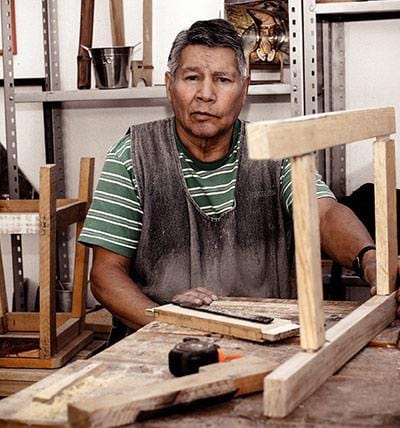Every year, we change the clocks. We set our clocks forward an hour in the spring, and back an hour in the fall. But why do we do this?
The history of Daylight Saving Time (DST) is a long and complicated one, with many twists and turns.
The idea of changing the clocks has been around for centuries, but it wasn't until the early 20th century that DST was finally implemented in the United States.
The main reason for changing the clocks is to make better use of daylight. By setting our clocks forward in the spring, we can enjoy an extra hour of daylight in the evening. And by setting our clocks back in the fall, we can enjoy an extra hour of daylight in the morning.
Why Do We Change the Time in the Fall?
As the days grow shorter and the nights get colder, many of us begin to change our clocks back an hour.

But why do we do this?
The practice of changing our clocks twice a year is a relatively recent one.
It was first proposed by Benjamin Franklin in 1784 as a way to conserve candles, but it wasn’t until 1905 that the idea was first implemented in the United States.
The main reason for changing the time is to make better use of daylight.
In the summer, when the days are longer, we set our clocks forward an hour and in the fall, when the days get shorter, we turn our clocks back an hour.
What Was the Original Purpose of Daylight Savings Time?
The original purpose of daylight savings time (DST) was to conserve energy during wartime.
The idea was first proposed by Benjamin Franklin in 1784, but it wasn't until nearly a century later that DST was first implemented in the United States during World War I.
The concept was then revived during World War II and has been used sporadically since then. In recent years, there has been growing evidence that DST may not actually save any energy at all. Nevertheless, many countries continue to observe DST in some form or another.
Who Started Daylight Savings Time?
In the early 1900s, the idea of daylight savings time was proposed by George Hudson, a New Zealand entomologist. Hudson noticed that he had more time after work to collect insects if the day was longer. The concept was later popularized by Englishman William Willett, who proposed that clocks be moved forward 20 minutes in April and then back 20 minutes in October. While the idea was initially met with skepticism, it eventually gained traction and was implemented in a number of countries, including the United States, during World War I as a way to conserve energy. Though daylight savings time is now a common practice in many parts of the world, there is still some debate over its efficacy.
Conclusion
It's that time of year again! Time to "spring forward" and change our clocks. But why do we do this? Is it really necessary? The practice of changing our clocks twice a year actually has a long history. It was first proposed by Benjamin Franklin in 1784 as a way to conserve candles. (Yes, before electricity, people used candles to see at night.)

Franklin's idea didn't gain much traction until nearly a century later.
In the early 1900s, there was a growing movement to adopt "daylight saving time."
The goal was to extend the number of daylight hours during the summer months when people were more likely to be outdoors and active.
The practice became widespread during World War I, when many countries adopted it as a way to conserve energy for the war effort.
After the war, daylight saving time was abandoned in many places. But it remained popular in some areas, particularly in the United States. Today, most countries in the world change their clocks twice a year.
In the United States, daylight saving time begins on the second Sunday in March and ends on the first Sunday in November. So there you have it!
FAQ
Have you ever spent a day of your life without clocks?
Have you ever spent a day without clocks? It's actually quite refreshing! You don't have to worry about what time it is or how long you've been doing something. You can just relax and enjoy the moment. It's a great way to reset your body clock and get in touch with the natural rhythms of the world around you. It's actually not as difficult as it may seem. If you can manage to forget about time, and just focus on enjoying the moment, it can be a very freeing experience. Try disconnecting from the world for a little while, and see how it feels. You may be surprised at how well you can function without clocks!
What are the various types of time clocks and what reasons to use them?
There are a few different types of time clocks, and each has its own advantages and disadvantages. The most common type is the mechanical time clock. This type of clock is very accurate, but it can be difficult to reset. The electronic time clock is more expensive, but it is easier to use and can be reset more easily. Finally, there is the online time clock, which is the most accurate and easy to use, but it requires an internet connection.
What would our world be like without clocks?
This is a question that has been asked by many people over the years. The answer to this question is not an easy one, as there are many factors to consider. Without clocks, people would have to rely on the sun on to tell time. This would mean that the days would be shorter in the winter and longer in the summer. People would also have to adjust their sleep schedules to match the changing daylight hours. This could be difficult for some people, as they may not be used to sleeping during the daytime. Overall, life would be very different without clocks.
What three US states do not observe Daylight Saving Time?
Many people are surprised to learn that not all US states observe Daylight Saving Time (DST). In fact, there are three US states that do not observe DST: Arizona, Hawaii, and parts of Indiana. There are a few reasons why these states have chosen not to observe DST.
For example, Arizona is located in a desert climate where the sun sets later in the day during the summer months.
Therefore, there is no need to change the clock in order to make the most of the daylight hours. Similarly, Hawaii is located so close to the equator that the length of the day does not change much throughout the year. As a result, DST would not have a significant impact on the daily lives of Hawaii residents.
ABOUT THE AUTHOR
Olivia Poglianich
Content Strategist
Olivia Poglianich is a nomadic brand strategist and copywriter in the wooden crafts and 3D product design space who has worked with brands such as Visa, Disney and Grey Goose. Her writing has taken her all over the world, from a Serbian music festival to a Malaysian art and culture event. Olivia is a graduate of Cornell University and is often writing or reading about travel, hospitality, the start-up ecosystem or career coaching. Her latest interests are at the intersection of web3 and communal living, both on and offline.






